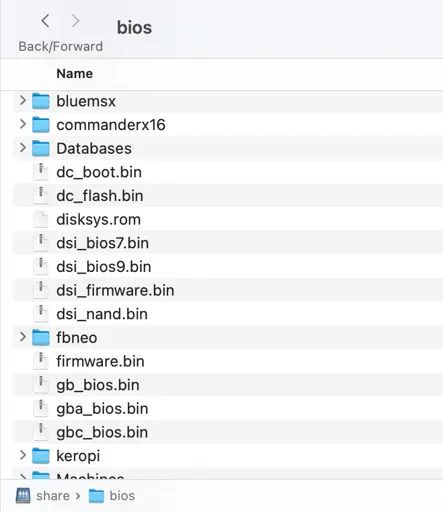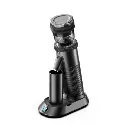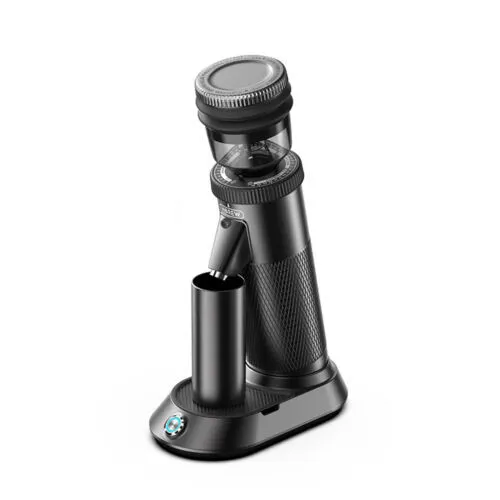
Trend to fix or buy consoles such as Game Gear or Nintendo 64s may reflect a desire for internet-free fun

Also disappointing to see such a click-bait-y headline from the Guardian.
It is only resolving for devices in the Tailnet. Kuma is checking they are all up, and this Ansible playbook is checking they have all their updates. I wouldn't have thought that was an unusual arrangement - and it's worked perfectly for about a year till about three weeks ago.
Tailscale MagicDNS issues since 1.84.1 mac?
Has anyone seen a drop in magic DNS performance in the last month?
I'm having this in situations where the DNS would be getting hammered - for example my apt updates ansible script, or Uptime Kuma checks. If I switch to IP addresses it works fine.
go to the cinema
empty.jpg
Jay Kay comes in and sits directly in front of me
afterallwhynot.jpg
Yes, this.
Thanks yes - that's exactly what I needed.
Thanks - this is exactly what I needed.
Yes - we're "I'll let you use my electricity for your computer thing" friends, not "I'm okay with seeing your printer on my home network" friends.
Yes - it seems odd not to report both.
Good experience with neko remote browser


I recovered from a small disaster today using the neko dockerised web-browser.
I set up a remote backup with Proxmox running on a HP mini and a Synology a month ago at a friend's house 3000 km away. I thought I'd reserved all the IP addresses, but last night the Synology IP address changed, so the NFS shares to Proxmox and Jellyfin broke. That wasn't to hard to fix remotely, but I don't want it to happen every time the DHCP lease expires.
So now I need to log into their router and reserve the IP addresses...
I can get on the local network there by ssh-ing into one of my entities (via Tailscale), but how do I get to the web interface of the router?
Enter neko. It spins up a browser in a Docker container that can be accessed over a web address. So I created an LXC, installed docker and spun it up, then was able to use that to open the local-only web interface to the router.
neko is intended for watch parties, so multiple people can be
Spot on. I guess that's one of those lead smurf hats.
Kavita is for ebooks - it's not perfect, has some weirdness with series sometimes because of it's manga heritage.
For me, AudioBookShelf is the clear standout for audio books, and I ended up going with Kavita for ebooks.
I have it in a git repo, broken down by the nodes and vps names. In each of these folders is a mixture of Ansible playbooks, docker compose or just markdown files with the descriptions. Some is random stuff - my VPS allows the export of the cloud firewalls as JSON for instance. All the secrets needed by Ansible are in an Ansible vault, the rest in KeePass.
Or just trotting, we don't know.
Taxidermists hate this one trick.
Prediction: data about measles cases stops being collected and published.
Yep, from the first button press, because it's easier, an it doesn't really matter which you do as long as it's the same each time.
Just squirt him with the water bottle if he starts asking questions like this.
Yep. Glad he's got a system that works for him, but as a solo dev I love my Forgejo. I self host it, (so no Trust issues) and if you've hosted any other services before, the setup is a simple Docker compose - so I'm not sure I accept the Heavyweight argument either.
It's not my meme, but Men who stare at goats.
Gamers go offline in retro console revival | The Guardian

Trend to fix or buy consoles such as Game Gear or Nintendo 64s may reflect a desire for internet-free fun

Rosenau is part of a growing community who are ditching contemporary video games and picking up the consoles from their childhood, or even before their time. And gen Z gamers are following suit, with 24% owning a retro console, according to research by Pringles.
You might need to rename bios files for your emulator


A bit of a YSK for noobs (like me).
I was setting up the RG35XX-SP with Knulli last night. They have an excellent little tool in the menus for checking for any missing bios files for the emulators. A few of the files I couldn't find anywhere, but I had similar (but not exactly) named files. For example, a DS emulation bios I was missing was dsi_bios7.bin but I had biosdsi7.bin.
Amazingly, the (I guess Batocera) developers include an 'MD5' hash of the required files in the message with each file name, so I was able to confirm these are actually the same files. eg for the file dsi_bios7.bin the MD5 was given as 559dae4ea78eb9d67702c56c1d791e81.
If you're not a software developer, you might not be familiar with hashes. They are basically a big number computed from every byte in a file such that if two files have the same hash, for practical purposes, the files are exactly the same.
To find the MD5 of a file in mac or Linux you j
Bathroom scale options?


I've had a fitbit wifi bathroom scale for a while. Getting the data out got suddenly more difficult when Google bought them, and I didn't love giving that data to google. It's finally died, and I'm looking at replacement options.
In a perfect world, I could just go to a store and buy a "HomeAssistant Ready" scale. If I can't have that, I'd like a scale that is on my local network and exposes the last x weigh-ins as an API on the device, then I could write something to poll it.
I haven't seen anything like those, but have turned up:
Any other good options?

Today, we took apart the ModRetro Chromatic: a new entry in the handheld gaming market that might remind you a bit of something from the past. The ModRetro Chromatic really does hit us hard in the…

Today, we took apart the ModRetro Chromatic: a new entry in the handheld gaming market that might remind you a bit of something from the past. The ModRetro Chromatic really does hit us hard in the nostalgias, bringing home that Christmas morning feeling. - ifixit
Powkiddy RGB10 Max 3 - first impressions


For context, I'm new to retro-gaming & emulation.
How I got here:
The Steamdeck became available in my country, and I instantly desired one, but since I have a considerable Steam library that doesn't get played on my laptop and an Xbox S that hasn't been turned on for a year, I had to question if I really could justify something that expensive that might not get played much after a couple of months.
I've heard of Pico-8 games on an unrelated tech podcast, and that interested me. So I googled what handhelds I could play those on, and a few rabbit holes later I was here - a sub $100 handheld that can play retro roms, "up to" PSP - which I own a shoe box of UMDs for. I know my way around Vice City and would like to go back some day.
Screen Format:
The idea of playing PSP games was what tipped me towards a 16:9 screen rather than a squarer format. Perhaps that will turn out to be right for me, but right now I'm regretting it since I'm in a deep nostalgia dive of squarish fo
Experience of the HiBREW G5?


Does any one have any experience of this low cost conical burr grinder? I'm getting sick of my (rather good Timemore C2) hand grinder.
Beware Hollywood’s digital demolition: it’s as if your favourite films and TV shows never existed

The amount of media being wiped from the internet is worrying for viewers, and industry workers who need the exposure, says journalist and critic Zach Schonfeld

Last June, fans of Comedy Central – the long-running channel behind beloved programmes such as The Daily Show and South Park – received an unwelcome surprise. Paramount Global, Comedy Central’s parent company, unceremoniously purged the vast repository of video content on the channel’s website, which dated back to the late 1990s.
Solid introduction to LLMs from Andrej Karpathy
Click to view this content.
This is a pretty great 1 hour introduction to AI from Andrej Karpathy. It includes an interesting idea of considering LLMs as a sort of operating system, and runs through some examples of jailbreaks.
Value of "encrypted at rest" data
I'm writing a specification for a web app that will store sensitive user data, and the stakeholder asked that I consider a number of fairly standard security practices, but also including that the data be "encrypted at rest", i.e. so that if someone gains physical access to the hard disk at some later date the user data can't be retrieved.
The app is to be Node/Express on a VPS (probably against sqlite3), so since I would be doing that using an environmental variable stored in a file on that same computing instance, is that really providing any extra security?
I guess cloud big boys would be using key management systems to move the key off the local instance, and I could replicate that by using (Hashicorp Vault?) or building a service to keep the key elsewhere, but then I'd need secure access to that service, which once again would involve a key being stored locally.
What's your thoughts, experience, or usual practice around this?
Noob espresso experience (longish post)


I asked for some advice here a couple of months ago about transitioning to espresso from Aeropress, and have since done that, and thought my journey my have some lessons for others, or y'all might have some ideas for my remaining issues.
Journey
Instant -> Nespresso pods -> Aeropress -> multiple daily espresso
Machine
After a bit of research, I was quite keen on the Sage/Breville Dual Boiler, but it was well out of my price range. I ended up purchasing "The Infuser" which is like their bean to cup Barista Express without the built in grinder. I had been planning on getting the Bambino, but the Infuser was less money (AUD350 - perhaps this model is being retired) and seemed more like a 'real' espresso machine.
The Infuser is a 54mm portafilter, PID, three way valve machine. The water heats quickly (although not as quickly as the Bambino) although I

Ownership rights are buried in the fine print and downloading or buying physical copies may be the only ways to keep your favourites

*What rights do you have to the digital movies, TV shows and music you buy online? That question was on the minds of Telstra TV Box Office customers this month after the company announced it would shut down the service in June. Customers were told that unless they moved over to another service, Fetch, they would no longer be able to access the films and TV shows they had bought. *
Confused about image digests
I've been thinking about writing a script that would alert me if there was an updated version of an image I was running.
DockerHub shows an image digest on the page for that tag:

And I can extract the digest for an image I am running with:
docker inspect --format='{{index .RepoDigests 0}}' jc21/nginx-proxy-manager:latest
This matches the one from the DockerHub screenshot. But I can't see a CLI way to get the image digest from a registry. It seems like:
docker manifest inspect jc21/nginx-proxy-manager:latest
should do it, but it pulls out the digest of each of the architecture builds for that tag instead of the one shown in dockerhub.
Is there a way to compare the current local image with one in a registry from the command line? Or perhaps there's a more sensible way to do this?
Are you getting good use out of your espresso machine?
I'm currently brewing in an Aeropress, and considering one of the lower end espresso machines.
But based on a few comments from James Hoffmann about him drinking filter coffee at home, I'm wondering if an espresso machine is something that people end up using every day, or if people are brewing with simpler methods and just making espressos when they've got time on the weekend or people over?
What's your experience, did you buy a machine and it mostly just takes up counter space, or is it a daily source of joy?
How are you brewing your Aeropress?
Somewhat bewildered by the millions of Aeropress recipes on youtube, I'm wondering if daily users end up settling into a reliable, simple process that's similar from person to person.
In particular, I note that my method (basically a french press) is vastly different from the one in the instructions which is ground much finer, uses less water, and starts dripping through the filter immediately.
Anyway, here's me:
I'd love to hear yours.